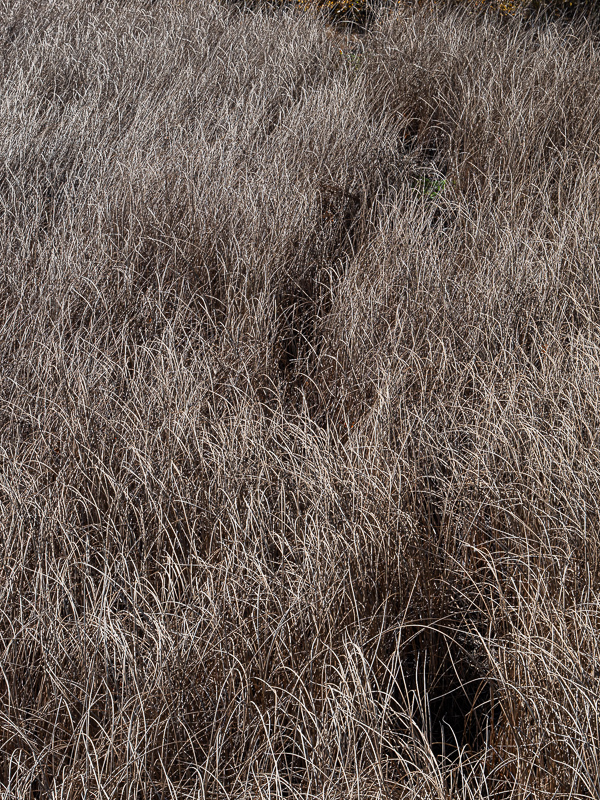Every Picture Is a Compromise
Lessons from the Also-rans
Most photography websites show the photographer's very best work. Wonderful. But that's not the full story of a creative life. If we want to learn, we'd better pay attention to the images that aren't "greatest hits" and see what lessons they have to offer. Every picture is a compromise — the sum of its parts, optical, technical, visual, emotional, and even cosmic – well, maybe not cosmic, but sometimes spiritual. Success on all fronts is rare. It's ok to learn from those that are not our best.
This is a series about my also-rans, some of which I've been able to improve at bit (i.e., "best effort"), none of which I would consider my best. With each there are lessons worth sharing, so I will.
Original digital captureWhat I saw that I liked:I see this often in eastern Oregon. The grass has been impacted by deer. I like the "evidentiary nature" of these images. What I don't like in the picture:The one above shows where the deer slept and doesn't have a lot of movement in evidence. That's okay if that is the purpose of the image, but the one at left . . . What I learned:The shot at left shows the path where the deer walked and that pulls my eye into the photograph compositionally. Since this is about the distorted grass and not about the grass itself, it feels better to me to render this image in b/w. Without the color, our attention is drawn more to the path they walked. 2nd Chances: What I might try nextThe question that always arises with an image like this has to do with titling. Does the title make it obvious, like "Deer Path Through the Grass"? Or is that overkill? |


